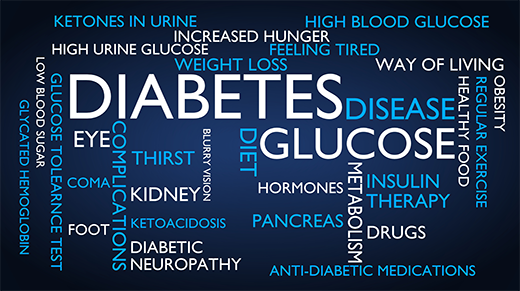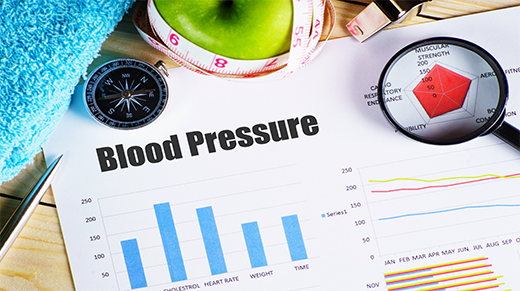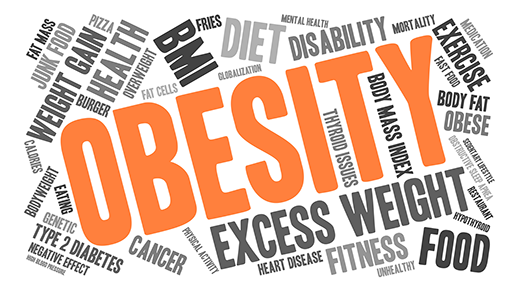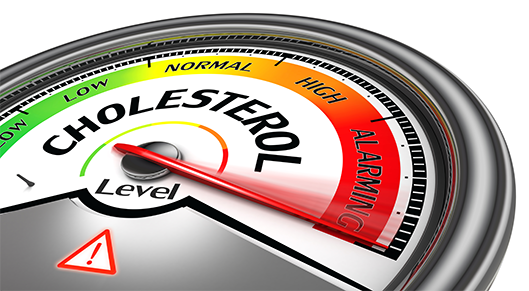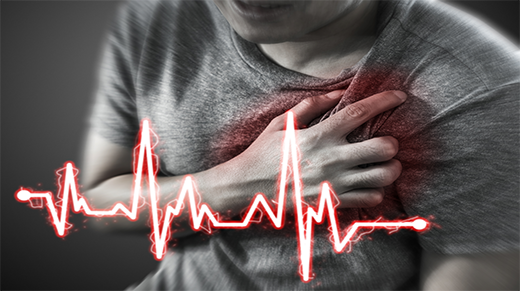What Increases the Risk of Developing a Heart Attack?
Coronary artery disease (disease of the blood vessels that supply the heart) is the most common type of cardiovascular disease.
It happens when narrowing of the coronary arteries occurs due to build-up of atheroma (fatty material) in their walls which causes chest pain, discomfort or shortness of breath that may eventually lead to a myocardial infarction (heart attack) [1].
There are nearly 2.3 million people living with coronary artery disease in the UK with cardiovascular disease being responsible for nearly 26 per cent of all deaths in the UK according to the latest statistics updated by the British Heart Foundation in August 2017 [2].
Every day in the UK [2]:
435 people lose their lives because of cardiovascular disease, nearly a quarter of them will be younger than 75 years old.
Seven million people will be fighting their daily battle with cardiovascular disease.
This number is equally divided between men and women.
530 people will go to hospital because of a heart attack.
190 people will die from a heart attack, that’s nearly 70,000 deaths a year.
Several risk factors lead to the development of heart disease; some of which are non-modifiable (such as advancing age, gender and family history of coronary artery disease), however, others are modifiable such as[2]:
Smoking
Smoking has been shown to be an independent predictor of death in patients who develop a heart attack. One in six adults in the UK smoke cigarettes and it is estimated that nearly 20,000 deaths in the UK each year are attributed to smoking. Scientific research has proven beyond doubt that smoking is directly responsible for all types of coronary artery disease [3].
High blood sugar
Diabetes mellitus (high blood sugar) can damage the inner lining of the coronary arteries and make atheromas develop faster. Diabetes can double the risk of developing cardiovascular disease. There are nearly 3.6 million adults in the UK who have diabetes with an estimated 1 million people living with undiagnosed diabetes mellitus [4].
High blood pressure
Hypertension (high blood pressure) is present in nearly 30 per cent of adults in the UK with nearly half of them not receiving any form of treatment. People with high blood pressure are three times more likely to develop heart disease. Proper control of blood pressure significantly reduces the risk of developing a heart attack [5].
Obesity and misaligned eating habits
More than a quarter of adults in the UK are obese with more than a third being overweight. In addition, only a quarter consume the recommended minimum of five portions of fruit and vegetables a day. Both obesity and poor eating habits are closely related to the risk of developing a heart attack [6].
High blood cholesterol
Hypercholesterolemia (high blood cholesterol level) is one of the major risk factors for developing a heart attack leading to development and progression of atheromas in the coronary arteries. Some of its causes may be hereditary and others acquired due to bad eating habits, smoking, high alcohol intake, kidney or liver disease and lack of regular physical exercise [1].
Lack of regular physical exercise
In the UK, nearly 39 per cent of adults do not achieve the recommended level of physical activity. Exercise has been shown to have significant effects on the reducing the risk of developing coronary artery disease and reducing the risk of dying from a heart attack [2].
Stress
Continuous exposure to stressful conditions has debilitating effects on your body and heart. Stress exposure leads to the release of harmful hormones and substances in the body and stops the release of useful, naturally occurring chemicals that inevitably increases the risk of developing a heart attack either directly or through promotion of other risk factors such as smoking, alcohol consumption, lack of physical activity, and unfavourable eating habits [2]
Air pollution
Outdoor air pollution contributes to an estimated 40,000 premature deaths in the UK each year, with a significant impact on cardiovascular health [2].
Gender
Men are generally considered to have a higher risk for developing heart attacks in comparison to women due to hormonal factors that offer premenopausal women innate protection. However, women may be under diagnosed due to heart attacks occasionally presenting with rather atypical symptoms [7].
Family history of premature coronary artery disease
Having a family member that develops a heart attack at a relatively young age (before the age of 55 years in men or before 65 years in women) is considered a risk factor for developing future coronary artery events [8].
What are the Early Warning Signs of developing a Heart Attack?
Although a heart attack can develop suddenly, there are usually some warning signs that occur in the days and weeks before it.
These may sometimes be subtle and short-lived and that’s why they usually go unnoticed.
Being aware of these warning signs saves lives:
- Having exertional chest pain (related to walking, climbing stairs…etc) in the central part of the chest that may extend to the neck, lower jaw, left shoulder, arm and forearm that is eventually relieved by resting.
- A recent change in the level of physical activity that can be performed comfortably before developing unexplained shortness of breath, palpitations or undue fatigue requiring you to stop and rest.
- Having an increased sense of fatigue on less than ordinary exertion that is associated with a sense of nausea and profuse sweating that you aren’t accustomed to.
- Having a sense of unexplained dizziness, awareness of fast heartbeats or a sense of fainting especially if they are related to exertion.
- A sudden crushing or burning pain in the centre of the chest that develops at rest with the sense of fainting or inability to breathe especially if it lasts longer than 15 minutes.
- Having a similar form of chest pain that occurs at the beginning of physical activity that eventually goes away with continuation of exertion is also worthy of seeking medical attention [1].
Things to Do in the Event of a Heart Attack [1,2]?
- The first minutes are the most important and crucial for saving the life of a heart patient.
- Call 999 immediately and ask for an ambulance for a patient with chest pain.
- Even if in doubt, don’t hesitate to call as it is better to have a false alarm than for a person to lose their life. Paramedics and physicians are aware of that.
- If aspirin in readily available, chew and swallow 300 mg of aspirin (unless you know or were told that you are allergic to aspirin).
- Make sure that the person is resting until the ambulance arrives, don’t try to move around and stay put.
- Keep monitoring the person and don’t leave them and provide reassurance that help is on the way and ask them to try to focus on breathing calmly and regularly.
- If the person falls unconscious or appears not to be breathing, they might have developed a complication called ventricular arrhythmia. Immediately start chest compressions and CPR.
Cardiopulmonary resuscitation (CPR) is a lifesaving technique. Even if you are untrained, it is better to do something than nothing.
- If you are untrained, provide hands-only chest compressions at a rate of 100 to 120 per minute.
- If you are well-trained and confident, check for breathing and pulse. If there is no breathing or pulse for 10 seconds, then start CPR with 30 chest compressions followed by giving 2 rescue breaths.
- Continue CPR until help arrives or until you see signs of life.
Life After a Heart Attack
Going home after a heart attack can be quite intimidating as the experience is very unpleasant. A heart patient needs to start to work immediately on how their recovery from the heart attack should be.
- Heart attack recovery involves control of the risk factors and habits that led to this happening in the first place:
- Quitting smoking is top priority and there are many methods and support chains to help achieve that, in addition to, specialised smoking cessation clinics.
- If the person suffers from high blood pressure, blood sugar or blood cholesterol, these must be carefully monitored with close follow-up with their physician to achieve proper control. The elite personal trainer exercise rehab specialist and dietician advice is absolutely crucial in helping the patient reaching these goals much faster.
- Engaging in regular physical activity once being cleared by the physician is one of the hallmarks of heart attack recovery with a recommendation of performing a minimum of 30 minutes of moderate exercise on at least 5 days per week.
Keen to get started?
Claim now your FREE CONSULTATION by clicking on this link, here.
- Regular medical follow-up with your physician is paramount according the schedule you are given. It is important to report all your concerns to your physician and honestly report any symptoms you might feel as they will help the physician in following up the progression of your heart condition and the effects of medications prescribed.
- The key issue that physicians and patients work on during heart attack recovery is to minimise the risk of a repeat heart attack which is achieved by a collaboration between the patient, cardiologist (heart doctor), general practitioner, nutritionist, and exercise-rehabilitation therapist [9].
- You will usually be advised to join a cardiac rehabilitation programme after developing a heart attack.
Need for Cardiac Rehabilitation
- Since the key issue in heart attack recovery is to prevent the development of a repeat heart attack hence the importance of cardiac rehabilitation.
- Actively participating in a cardiac rehabilitation programme has been scientifically proven to be independently associated with a decrease in cardiac mortality (death from a heart disease) and a decrease in repeat heart attack.
-
- A large meta-analysis of several clinical trials on cardiac rehab following a heart attack has shown a significant reduction of 24 per cent for death from any cause and 25 per cent reduction for death from a cardiovascular cause[10].
- Cardiac rehabilitation has been subjected to cost analysis studies and has been shown to not only being clinically effective during heart attack recovery, but cost-effective as well. It compares favourably with other medical interventions performed in patients with coronary heart disease [11].
- Current clinical practice guidelines in the UK and from the European Society of Cardiology state with very strong clinical evidence that an exercise-based cardiac rehabilitation programme is recommended after developing an acute heart attack and that all patients should participate in such programmes as a part of heart attack recovery.
- The problem still lies in that cardiac rehab is vastly underutilised. With less than 30per centof eligible patients participating in such programmes after a heart attack. Interestingly, the most critical reasons are obstacles in the initial referral of patients to cardiac rehab programmes.
- Barriers limiting participation in cardiac rehabilitation programmes include:
- Patient factors (such as refusal to participate, inability to reach cardiac rehabilitation facilities due to cost or age and gender barriers). Once you received clearance to exercise from your medical doctor we provide this service at your convenient location.
- Provider or physician factors (such as lack of referral, considering patients to be high risk or to have a contraindication to exercise, disbelief in cardiac rehabilitation)
- Healthcare system factors (such as unavailability of cardiac rehab programmes or lack of health insurance coverage and cost issues).
- Thankfully, many healthcare systems are now adopting standing orders for referral of appropriate hospitalised patients, in addition to, holding physicians accountable for such referrals and spreading awareness[12].
All About Cardiac Rehabilitation
- What is Cardiac rehabilitation?
- A cardiac rehabilitation programme is a comprehensive exercise, education, and behaviour modification programme with a goal of helping patients restore and maintain optimal health while helping to reduce the risk of future heart problems.
- It has also been defined by the World Health Organisation (WHO) as all activities and interventions required to ensure the best possible physical, mental, and social conditions so that patients with cardiovascular disease may, by their own efforts, preserve or resume their proper place in society and lead an active life [13].
- What are the goals of a cardiac rehabilitation programme?
- Controlling symptoms related to cardiovascular disease.
- Reducing the risk of sudden death or repeat heart attack.
- Limiting the physiological and psychological effects of cardiac illness.
- Enhancing the psychological, social and vocational conditions of patients.
- Stabilising or reversing atherosclerosis (the process responsible for atheroma formation and progression).
- Who is cardiac rehabilitation for?
- Patients with any form of coronary artery disease.
- Patients who had a stent implanted in their coronary arteries or had coronary artery bypass surgery.
- Patients with stable heart failure.
- Patients who had a heart or heart/lung transplant.
Keen to get started?
Claim now your FREE CONSULTATION by clicking on this link, here.
What are the components of a cardiac rehabilitation programme and must it be personalised?
- A proper cardiac rehabilitation programme is a multi-disciplinary approach; meaning that it requires a focused team approach with the participation of a cardiologist, elite personal trainer exercise rehabilitation therapist, nutritionist, dietitian, psychiatrist, and nurse specialist.
- It includes:
- Medical evaluation with optimisation of prescribed medications.
- Nutritional counselling.
- Physical activity counselling.
- Risk factor modification and patient education.
- Management of current psychological and sexual condition.
- And finally, the cornerstone, which is Prescribed Exercise Training
- Prescribed Exercise Training (also known as cardiac rehabilitation exercise programme) is the key for a successful cardiac rehabilitation programme as it is properly tailored by your cardiologist and your elite personal trainer to suit each patient according to their baseline medical condition, current physical activity status and expected outcomes based on a carefully calculated formula of the so-called age-predicted maximal heart rate and heart rate reserve[14].
Different patients with different conditions require different approaches for the cardiac rehabilitation exercise programme that they undertake.
Consider the following patients:
- A 48-year-old accountant who was a heavy smoker, has high blood pressure is overweight who recently had a heart attack that was adequately treated and has normal heart functions.
- A 57-year-old housewife who has high blood sugar and recently developed her second heart attack with evidence of heart failure and markedly reduced heart functions.
- A 62-year-old gentleman who had a recent heart attack but has a history of an old stroke from which he hasn’t fully recovered and affects his mobility to some extent.
- A 72-year-old lady who has high blood pressure, high blood sugar and had a recent coronary artery bypass surgery but has had bilateral knee replacement.
Each of the above-mentioned examples should participate in a cardiac rehabilitation exercise programme but each will require a different programme that is customised and tailored to their needs since they all have different baseline levels of physical activity, different mobility issues and different goals to achieve.
That’s why customisation is key.
- Most available cardiac rehabilitation exercise programmes rely on treadmill or bicycle graded training. However, this may not be suitable for a large portion of patients with knee, hip or back problems. In addition, patients with history of neurological disabilities, balance or coordination problems may not be able to participate in the standard programmes and therefore customisation and personalisation of the programme to be tailored to each patient’s needs and goals is very important.
- Therefore, it is of the utmost importance to make sure you get to perform your cardiac rehabilitation exercise programme with a properly qualified exercise rehabilitation specialist or a certified elite personal trainer who is adequately trained in dealing with heart disease patients and for the whole procedure to be medically supervised with close communication between the exercise specialist and your physician.
What is a cardiac rehabilitation exercise programme?
- This is usually a 6-months programme depending on the intensity (number of sessions per week) permitted by the patient’s general condition.
- Initial assessment of each patient’s functional capacity prior to exercise training is a must to tailor an exercise programme that is not too hard for the patient to cause complications, and not too low to fail to produce the aimed benefits.
- Tailoring of the exercise programme is based on a triad of certain baseline patient characteristics, their current cardiac, medical condition, joints/muscle discomfort and injuries and their previous level of physical activity.
- The first 2 months usually involve short sessions of customised neuromuscular training, balance, core, and low intensity training etc, the following 2 months involve assessed and safe prolongation of exercise duration and increasing the intensity in a safe and customised manner to achieve the expected targets alonside very custumised type of body conditioning, core work and building confidence. The final 2 months aim at building consistency, moving confident and at easy as well as maintaining the exercise intensity and duration to safe levels as can be individually tolerated [14].
- All personal training provides closed monitoring with on-going live assessment thus, all progression/regression required changes are safely monitored and made immediately on the spot
Keen to get started?
Claim now your FREE CONSULTATION by clicking on this link, here.
What could be expected after completing a cardiac rehabilitation program?
- An improvement in exercise tolerance regardless of age or gender.
- It should be noted that adverse events from exercise are extremely rare and that benefits are greater in patients with lower exercise tolerance at baseline.
- Significant improvement of coronary artery disease symptoms.
- Improvement in blood cholesterol levels.
- Improvement in body weight.
- Reduction of blood pressure.
- Reduction of smoking with complete quitting expected in nearly a quarter of all patients.
- Improved psychological and social well-being like
- One of the benefits of exercise is that it causes the release of a natural substance called endogenous opioids which gives the sense of wellbeing and feeling good about oneself thus reducing and stress or anxiety that could be present during heart attack recovery.
- Reduction of stress.
- Improved social adjustment and functioning like
- The goals set during customisation of the programme consider your social setting (do you live alone, have a live-in companion, have dependants?) and the type of job/work you have. This is done to help you reach a normal level of social and vocational functioning so that you can perform all required activities comfortably.
- Majorly increasing your confidence
- Improved mood, seeing life more positive
- Reduced anxiety and depression feelings
Decreasing heart and non-heart related deaths.
Personalised Cardiac Rehabilitation Programmes by Jazz Alessi
I am an Elite Personal Trainer, Clinical Exercise Specialist, Second Generation Pilates Trainer, Certified Nutritionist and Weight Loss Expert.
I offer several programmes including cardiac rehabilitation programmes tailored to my clients’ unique needs which are done in close collaboration with your cardiologist and specialised physicians.
I use only an evidence-based approach to fitness, exercise and cardiac rehabilitation which guarantees getting the best results and at the same time keeping your safety and health as my priority.
As an elite personal trainer, I understand how to bring out peak performance, while helping you achieve optimal health and avoid injuries or any setbacks to your current health condition.
I enjoy working with new people, formulating unique multi-disciplinary exercise programmes to suit their personal goals.
I have helped clients who have suffered strokes, heart attacks or who struggle with cardiovascular diseases and am looking forward to helping you on your journey to get better.
Keen to get started?
Claim now your FREE CONSULTATION by clicking on this link, here.
References:
- NHS. Heart attacks.
- British Heart Foundation. Cardiovascular Disease Statistics 2017.
- Robertson J, Ebrahimi R, Lansky A et al. Impact of cigarette smoking on extent of coronary artery disease and prognosis of patients with non-ST-segment elevation acute coronary syndromes: an analysis from the ACUITY Trial (Acute Catheterization and Urgent Intervention Triage Strategy). JACC Cardiovasc Interv. 2014 Apr;7(4):372-9. doi: 10.1016/j.jcin.2013.11.017.
- Aronson D, Edelman E. Coronary artery disease and diabetes mellitus. Cardiol Clin. 2014 Aug;32(3):439-55. doi: 10.1016/j.ccl.2014.04.001.
- Rosendorff C, Lackland D, Allison M, et al. Treatment of hypertension in patients with coronary artery disease: a scientific statement from the American Heart Association, American College of Cardiology, and American Society of Hypertension. Hypertension. 2015 Jun;65(6):1372-407. doi: 10.1161/HYP.0000000000000018.
- Tuso P, Stoll S, Li W.A plant-based diet, atherogenesis, and coronary artery disease prevention. Perm J. 2015 Winter;19(1):62-7. doi: 10.7812/TPP/14-036
- Yahagi K, Davis H, Arbustini E, et al. Sex differences in coronary artery disease: pathological observations. Atherosclerosis. 2015 Mar;239(1):260-7. doi: 10.1016/j.atherosclerosis.2015.01.017.
- Nasir K, Budoff M, Wong N et al.Family history of premature coronary heart disease and coronary artery calcification: Multi-Ethnic Study of Atherosclerosis (MESA).Circulation. 2007 Aug 7;116(6):619-26. doi:10.1161/CIRCULATIONAHA.107.688739.
- Witt et al. Cardiac rehabilitation after myocardial infarction in the community. JACC 2004; 44:988-996. doi: 10.1016/j.jacc.2004.05.062
- Oldridge et al. Cardiac Rehabilitation After Myocardial Infarction – Combined Experience of Randomized Clinical Trials. JAMA 1988;260:945-950. doi: 10.1001/jama.1988.03410070073031
- Lavie et al. Cardiac rehabilitation and preventive cardiology in the elderly. Cardiol Clin. Feb 1999;17(1):233-42
- Cortes. Determinants of referral to cardiac rehabilitation programmes in patients with coronary artery disease: a systematic review Am Heart J 2006;151:249-256. .doi: 10.1016/j.ahj.2005.03.034
- WHO Expert Committee on Rehabilitation. World Health Organ Tech Rep Ser 1993;831:1122.
- Thomas et al. AACVPR/ACC/AHA 2007 performance measures on cardiac rehabilitation for referral to and delivery of cardiac rehabilitation/secondary prevention services. JACC 2007 Oct 2;50(14):1400-33. doi: 10.1016/j.jacc.2007.04.033.
- Cannistra et al. Comparison of the clinical profile and outcome of women and men in cardiac rehabilitation. Am J Cardiol. May 15 1992;69(16):1274-9. doi: 10.1016/0002-9149(92)91220-X
- Giallauria et al. Favourable effects of exercise-based cardiac rehabilitation after acute myocardial infarction on left atrial remodeling. Int J Cardiol. Aug 2 2008. doi: 10.1016/j.ijcard.2008.05.026.
- Sarrafzadegan et al. Changes in lipid profile of patients referred to a cardiac rehabilitation programme. Eur J Cardiovasc Prev Rehabil. Aug 2008;15(4):467-72. doi: 10.1097/HJR.0b013e328300271f.
- Bader al. Clinical profile and outcomes of obese patients in cardiac rehabilitation stratified according to National Heart, Lung, and Blood Institute criteria. J Cardiopulm Rehabil. Jul-Aug 2001;21(4):210-7





